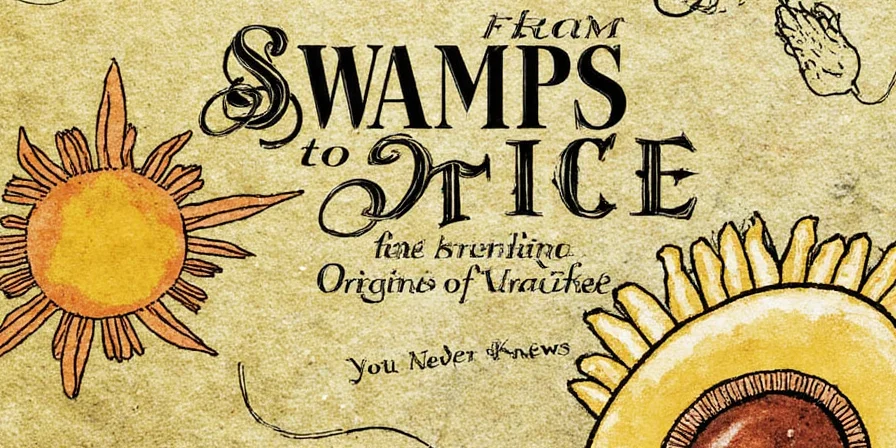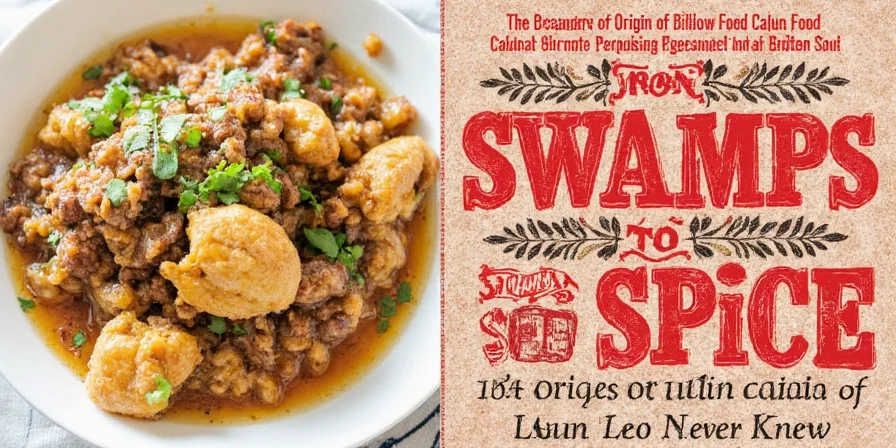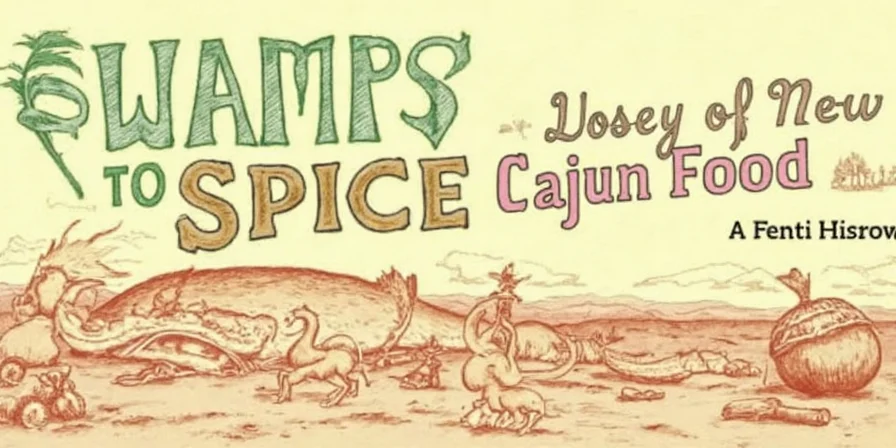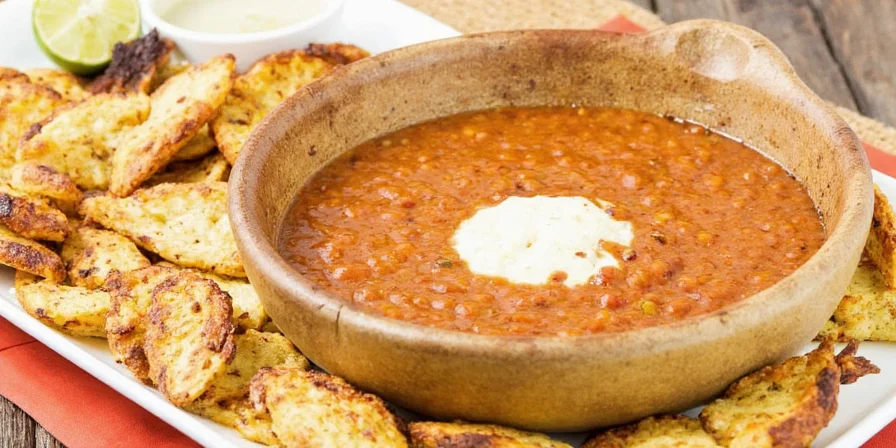From Swamps to Spice: The Surprising Origins of Cajun Food You Never Knew!

Introduction: What Is Cajun Food Anyway?
Cajun food—just the name makes you think of smoky meats, spicy stews, and mouthwatering aromas wafting through a warm Louisiana kitchen. But where does Cajun food come from? It’s not just about heat and flavor—it's a story of survival, culture, and migration that has evolved into one of America’s most beloved culinary traditions.
| Quick Facts About Cajun Cuisine | |
|---|---|
| Origin | Louisiana (USA) |
| Main Influences | French, Spanish, German, African |
| Signature Dishes | Gumbo, Jambalaya, Étouffée |
| Spice Level | Moderate to Spicy |
The Historical Roots of Cajun Culture
Cajun cuisine began with a group of French-speaking settlers known as the Acadians. These hardy folks were originally from Canada’s Maritime provinces. When the British expelled them in the mid-1700s—a tragic event known as Le Grand Dérangement—they eventually made their way to southern Louisiana.
They settled in the bayous and wetlands, blending into the already diverse population of Native Americans, Africans, and Spaniards. From these humble beginnings, Cajun culture was born, and so was its unique cuisine.

How Geography Shaped Cajun Flavors
Louisiana’s geography is rich with natural resources—rivers, swamps, forests, and the Gulf of Mexico. This abundance meant Cajuns had access to fresh seafood, wild game, and a variety of vegetables like okra, bell peppers, onions, and celery (the famed “Holy Trinity” of Cajun cooking).
- Seafood: Crawfish, shrimp, catfish, oysters
- Meats: Andouille sausage, rabbit, deer
- Veggies: Tomatoes, okra, corn, green beans
But because refrigeration wasn’t available back then, Cajuns relied heavily on preservation techniques like smoking, drying, and pickling. These methods added layers of flavor and complexity to their dishes.
Spices That Define Cajun Cuisine
When we think of Cajun food, we think SPICE. But it’s not just about making things hot—it’s about depth, balance, and tradition.
| Spice/Herb | Role in Cajun Cooking |
|---|---|
| Paprika | Adds color and mild earthiness |
| Cayenne Pepper | Provides heat (used sparingly or generously) |
| Garlic Powder | Enhances savory notes |
| Onion Powder | Deepens flavor base |
| Oregano | Brings Italian influence |
| Thyme | Earthy, aromatic undertone |
| Cumin | Warms up spice blends |
Cajun Seasoning Mix Recipe
Want to make your own Cajun seasoning at home? Here’s a classic blend you can customize:
- 2 tbsp paprika
- 1 tbsp garlic powder
- 1 tbsp onion powder
- 1 tsp cayenne pepper (adjust for heat level)
- 1 tsp dried thyme
- 1 tsp oregano
- 1 tsp cumin
Top 5 Cajun Recipes to Try at Home
If you're ready to dive into Cajun cooking, here are five must-try recipes that will take your taste buds straight to Louisiana.
- Gumbo: A hearty stew with a dark roux base, loaded with shrimp, sausage, and okra.
- Jambalaya: A rice dish cooked with tomatoes, chicken, and spicy andouille sausage.
- Étouffée: A rich sauce served over rice, typically with crawfish or shrimp.
- Boudin: A traditional sausage made with pork, rice, and Cajun seasonings.
- Red Beans and Rice: A comforting Monday staple, often flavored with smoked sausage and holy trinity veggies.

Cajun vs. Creole: What’s the Difference?
This is a question many spice lovers ask—and it’s easy to confuse the two! Both cuisines hail from Louisiana and share similar ingredients and flavors. But there are subtle yet important distinctions.
| Cajun | Creole | |
|---|---|---|
| Origins | Rural, Acadian | Urban, New Orleans-based |
| Spice Level | Hotter, bolder | More refined, tomato-forward |
| Base Flavor | Holy Trinity (onion, celery, bell pepper) | Holy Trinity + tomatoes |
| Dishes | Gumbo, Boudin, Smoked Sausage | Jambalaya, Shrimp Creole, Gumbo with Tomatoes |
Pro Tips for Mastering Cajun Flavor at Home
You don’t need to be from Louisiana to master Cajun cuisine. Here are some expert tips to help you nail those iconic flavors:
- Use Fresh Spices: Old spices = bland food. Keep your spice rack updated for maximum flavor.
- Make Your Own Roux: The base of gumbo starts with flour and fat cooked together until dark brown. Don’t rush this step!
- Simmer Slowly: Cajun dishes benefit from long cooking times. Let the flavors meld and deepen.
- Season Generously: Cajun food is bold by nature—don’t hold back unless you prefer milder tastes.
- Serve with Rice: Rice is more than a side—it’s an essential component that soaks up all those delicious juices.

Cajun Culture Today: A Culinary Legacy
Modern-day Cajun cuisine remains deeply rooted in tradition but has also adapted to contemporary tastes. With TV shows, festivals, and restaurants dedicated to Cajun flavors, this cuisine has gained national and international acclaim.
Festivals like the Breaux Bridge Crawfish Festival and New Orleans Food & Wine Experience celebrate Cajun food’s vibrant heritage. And let’s not forget the ever-popular Food Network personalities who have introduced millions to the joys of spicy Southern comfort food.
Conclusion: Embrace the Heat, Celebrate the Heritage
So where does Cajun food come from? It’s a beautiful fusion of history, geography, and culture. Born out of resilience and nurtured by generations of cooks who embraced whatever nature provided, Cajun cuisine tells a story with every bite.
Whether you’re a seasoned chef or a curious home cook, Cajun food offers a world of flavor waiting to be explored. So fire up that cast iron skillet, grab your favorite spices, and let the spirit of Louisiana spice up your dinner table!












 浙公网安备
33010002000092号
浙公网安备
33010002000092号 浙B2-20120091-4
浙B2-20120091-4